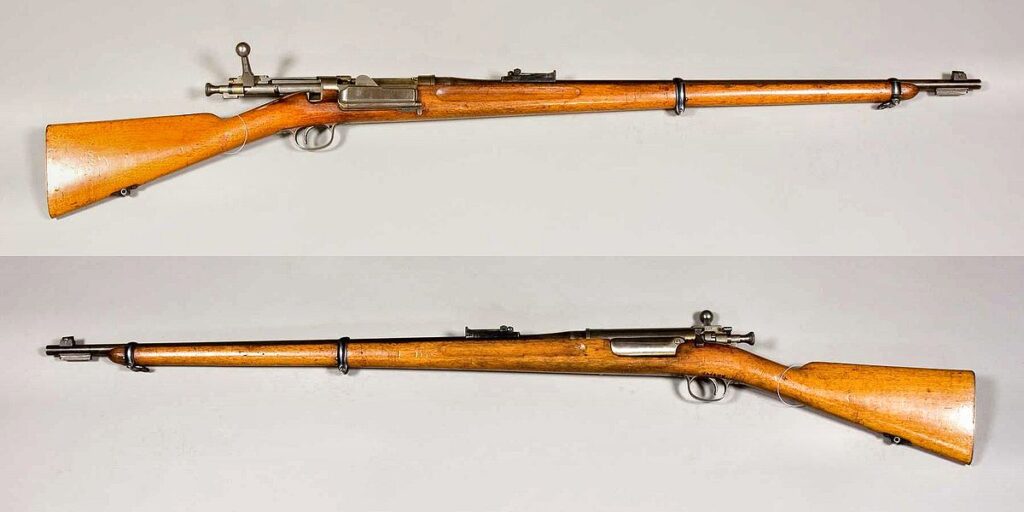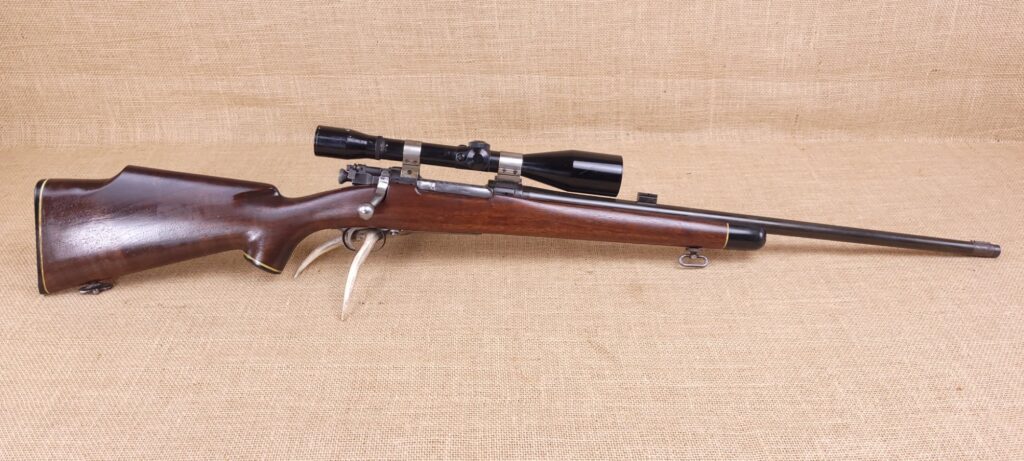
The old man held the rifle the way a violinist might cradle a Stradivarius—reverent, practiced, and without hesitation. The wood, worn smooth from a thousand hunts, bore the rich luster of walnut long exposed to weather and oil. The steel? Bluing faded, but no less honest. It was a Springfield. And it still shot true.
In barns, trenches, gun safes, and deer blinds across the last century, the Springfield M1903 has earned its place—not just as a rifle, but as a cornerstone of American gun culture. It was forged in a time of transition, built from both borrowed genius and homegrown craftsmanship, and carried through every major conflict of the 20th century.
But it didn’t stop there.
It went home with the GIs. It got a trim, a polish, and a new coat of varnish. It became the father’s rifle, then the grandfather’s rifle, then the one you pull out of the cabinet when it’s time to explain how things used to be built.
The Springfield M1903 didn’t just serve—it lived.
From the Krag to the Springfield: The Quiet Race for Supremacy
The year is 1898. American troops, freshly returned from the Spanish-American War, are passing around captured Mauser rifles like trophies. They’re impressed — and a little embarrassed. The Krag–Jørgensen rifles they’d carried had served their purpose, but these Spanish Mausers had been quicker to reload, more powerful, and more modern in almost every sense.

It didn’t take long for the U.S. Army Ordnance Department to come to a quiet but important conclusion: America needed a better service rifle.
Design work began in earnest. Springfield Armory, already the nation’s most important arms factory, was tasked with developing a bolt-action rifle that would be competitive — even dominant — on the global stage.
But rather than start from scratch, American designers looked across the Atlantic. The German Mauser Model 1898 had earned a reputation as one of the best rifles in the world. The Americans liked what they saw — perhaps a little too much.
When the M1903 Springfield was introduced, it bore more than a passing resemblance to the Mauser. So much so, in fact, that Mauser Werke sued the U.S. government for patent infringement. They won. The U.S. quietly paid over $200,000 in royalties. It was a costly but calculated move — and one that resulted in what many would later consider the finest bolt-action rifle ever issued to U.S. troops.
Built to Shoot
The first Springfield rifles were chambered in .30-03, but the cartridge’s round-nosed bullet quickly proved outdated. The Germans had moved to spitzer (pointed) bullets, and within just three years, the U.S. followed suit. The new .30-06 Springfield cartridge was born — a round that would outlive the rifle it was designed for by over a century.
With its robust Mauser-style action, five-round internal magazine, and finely adjustable rear sights, the M1903 was far more than a battle rifle. It was a shooter’s rifle.
From its earliest days, the Springfield was praised for its accuracy. Even in its standard military configuration, it could easily hold minute-of-angle groups with good ammunition. For the soldiers who carried it, that meant confidence. For the marksmen who competed with it, that meant trophies.
World War I: The Springfield’s Baptism by Mud
When the U.S. entered World War I in 1917, it found itself unprepared in more ways than one. One key issue: there weren’t enough M1903 rifles to arm the rapidly growing army.
To solve the problem, the U.S. adopted a parallel design — the M1917 Enfield, based on a British pattern. It would equip the bulk of American infantry in Europe. But the Springfield remained the preferred rifle for Marines, officers, and snipers.
In the trenches of France, the M1903 faced its first real test. Mud, rain, and the brutality of static warfare put enormous strain on weapons. The Springfield’s sights, originally designed for long-range volley fire, proved a bit too delicate and overengineered for daily combat. But the rifle itself? It performed.
Snipers fitted with Warner & Swasey scopes used the M1903 to deadly effect. In engagements from Belleau Wood to the Meuse-Argonne Offensive, American sharpshooters picked off enemy machine gun teams and officers from hundreds of yards away. The rifle had arrived — not just as a tool of war, but as a symbol of American precision.
Between the Wars: A Marksman’s Darling
When peace returned, the Springfield didn’t fade into storage. Instead, it went to the range.
The National Matches at Camp Perry, long a proving ground for America’s best riflemen, became a showcase for the M1903. National Match Springfields were hand-fitted at Springfield Armory with tighter tolerances, smoother bolts, and carefully selected barrels. These rifles weren’t just functional — they were exquisite.
Civilian shooters who’d handled the rifle in war brought it home, eager to find new uses. The .30-06 cartridge, now widely available, proved perfect for everything from mule deer in Colorado to whitetail in Pennsylvania.
But the standard-issue military rifle was heavy. It wasn’t built for stalking through brush or carrying up a mountain. Enter the golden era of sporterizing.
Sporterizing the Springfield: Where Craft Met Utility
Between the wars, and especially after WWII, the U.S. was flooded with surplus M1903 rifles. The DCM — predecessor to the CMP — sold them to civilians for as little as $20. In small towns and big cities alike, a generation of American shooters began turning military rifles into sporting masterpieces.

Some were rough hacks — barrels cut down with hacksaws, scopes mounted crookedly, and stocks “customized” with little more than a wood rasp. These “garage sporters” were everywhere. And while many purists lamented the loss of originality, these rifles often served their owners for decades.
But at the higher end of the spectrum, the Springfield became a canvas for artistry.
Legendary gunsmiths like Griffin & Howe, Paul Jaeger, Frank Pachmayr, and Sedgley took M1903 actions and transformed them into custom hunting rifles that rivaled any bolt-action made in Europe.
Stocks were carved from rich American black walnut or imported French walnut blanks. Hand-cut checkering wrapped around gracefully shaped grips. Barrel bands and custom floorplates featured engraving. Receivers were polished and blued to a deep, mirror-like sheen.
These weren’t just rifles — they were heirlooms.
World War II: The Second Call to Arms
When war came again in 1941, the Springfield M1903 was already showing its age. The M1 Garand, a semi-automatic powerhouse, had become the standard-issue rifle. But there weren’t enough Garands to go around.
Once again, the M1903 was pressed into service. A new variant, the M1903A3, was introduced with simplified sights and stamped metal parts to speed production. It wasn’t as finely finished, but it was rugged, reliable, and deadly accurate.
The Springfield was no longer front and center, but it found its niche: training, second-line duty, and above all, sniping. The M1903A4 sniper rifle, fitted with a 2.5x or 3x scope, served American snipers in Europe and the Pacific. From the hedgerows of Normandy to the caves of Okinawa, the old bolt-action still held its own.
Veterans of both world wars would later say that the Springfield “shot where you pointed.” And in the hands of a skilled rifleman, that was more than enough.
Legacy and the Modern Collector
After the war, the Springfield finally began to retire. But not quietly.
The Civilian Marksmanship Program (CMP), successor to the DCM, began offering surplus M1903s to the public. Prices rose. Interest surged. Collectors began learning to decipher serial numbers and cartouches, chasing rare variants and original finishes.
Restoration projects blossomed. Old sporterized rifles were returned to military trim. High-grade originals commanded premium prices. Gun shows, forums, and auctions turned the Springfield into a collector’s darling.
At the same time, a new generation of hunters and shooters discovered what their fathers and grandfathers had known: a good Springfield is still a joy to shoot. Whether bagging an elk at 300 yards or punching paper at the range, the rifle delivers.
The Springfield in Popular Culture and Memory
Beyond gun safes and collector shows, the M1903 found its way into American film, literature, and iconography. In movies like “Saving Private Ryan” or “Flags of Our Fathers,” its silhouette appears not just as a weapon, but as a symbol — representing the grit and discipline of an earlier American military.
Reenactors and living history groups often go to great lengths to equip themselves with accurate M1903s. The way it loads, cycles, and recoils adds authenticity to World War I and II portrayals. It isn’t just the rifle’s look, but its feel that connects people with the past.
Even video games and historical documentaries tend to give the Springfield its due. It’s nearly always the marksman’s choice — a reminder that precision can still matter more than fire rate.
A Living Legacy
The M1903’s long life isn’t just a result of steel and oil. It’s the product of good design, pride of ownership, and the memories it helped create. Some rifles just outlive their purpose. This one outlived its wars.
It became part of American tradition. It taught a hundred thousand young men how to shoot. It filled freezers. It hung over fireplaces. It was passed down.
And it’s still being passed down.
At gun shows, a young man might lift the lid on a velvet-lined case and see his future favorite rifle waiting inside. At CMP matches, a grandfather might spot his grandson’s tight group and smile, knowing exactly what rifle taught him that. And in backcountry lodges or forested deer camps, someone will always point and say, “That’s a Springfield. Now let me tell you about it.”
That’s the measure of a rifle’s legacy.
That’s the Springfield M1903.
